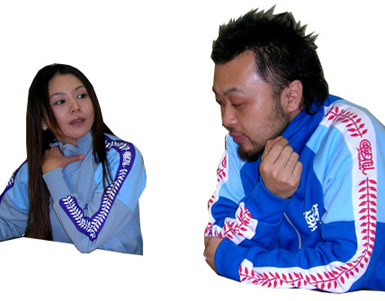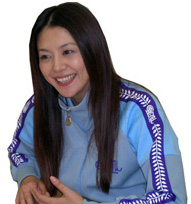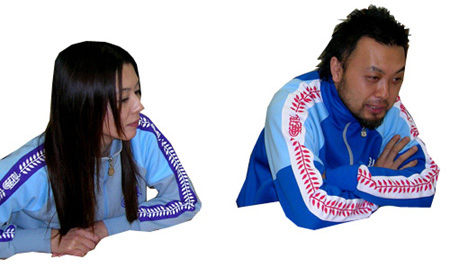ASA-CHANG & JUNRAY FEAT. KYOKO KOIZUMI
PEOPLEText: Yasuharu Motomiya
Having released the albums “Hana” and “Tsuginepu” in succession, Asa-Chang & Junray now have a new single out called “Senaka“. For this track they have recruited Kyoko Koizumi, singer and actress who has managed to change with the times, always finding a niche in the pop scene. We spoke with Koizumi and Asa-chang about “Senaka” and the impact it has had on Japanese pop.

Lets start with introductions.
Asa-change (A): I am Asakura. The kanji for “asa” is the same as the “asa” in Asahi Shinbun. (laughs)
Kyoko Koizumi (K): I am Kyoko Koizumi. I’m a singer and an actress. The “kyo” of Kyoko is the same as the kanji for “konnichiwa”. (laughs)
Tell us how you came to collaborating together.
A: I approached Koizumi-san by calling her. I was actually in charge of her in my days as a hair and make-up artist, so I asked her a favour as an old friend.
Why Koizumi-san?
A: I just thought it had to be her.
And what did you think about that, Koizumi-san?
K: It’s not very often an old friend – an old comrade, even – is in need of you. We’re all adults now and not everything is for kicks. So it felt good to be really needed.

In the meantime, Asa-chang has been very active, in particular after he left Tokyo Ska Paradise Orchestra. Had you heard any of his music?
K: Yes, I had. And I’d done a few live performances with Ska-Para and had them come in to the studio.
A: We were somehow connected, through Ska-Para and also through Junray.
K: I’ve always listened to Ska-Para and went to quite a few gigs as well. I’ve never seen Junray live, but I’m always curious about what old friends are doing, so of course I’d listened to the music.
I was quite surprised when I first heard Junray, but what did you think?
K: I thought it was very Asa-Chang. Even when he was doing Ska-Para, I’d always liked his poignant Showa-era (1926-1989) -touch.
A: It’s in my roots.
K: His look might have changed, but that part, that root, hadn’t changed at all, and that’s comforting. Words and numbers seem to live together within Junray, and that has a very Asa-Chang feel.
A: A lot of people see me doing Junray now and think that I’ve changed direction completely. But people like Koizumi-san, who’ve known me since my impressionable twenties, realise what lies in the roots. I don’t have to explain what has changed and what hasn’t; we understand each other well. Or at least, she gets me.

Who was around at that time?
K: There was a lot of us, like Bikke of Tokyo Number One Soul Set and Tsuyoshi Koujou. Every night we would form a crowd.
A: That was us in our twenties. It was our second adolescence.
What were your thoughts or impressions when you heard Koizumi-san’s voice for the track?
A: Her voice had even more of a presence than I’d imagined and I realised how right it was to have asked her. With Junray, you create the music by cutting each note and building them one by one according to a designed plan. In a way I’d known this from the start, but with Koizumi-san’s voice, you can cut it anyway you like, and it wont lose its presence. It doesn’t usually work out like that…
Having heard the edited song, what did you think?
K: At first I just took in how the song ended up, but as I listened a few times more, I felt how poignant it was, thoughts stopping and starting, words faltering or blurting out – just like the minds of people having conversations, and I realised how good it was.
A: She’s said it all (laughs). I was going to try and explain, but she’s said it all (laughs). The reason why Junray cuts such random rhythms is because human emotions sway. People contemplate; they have thoughts that cant be put into words. The rhythms aren’t just there for fun, they are the way they are because they’re trying to express such scenes of emotion. As far as I’m concerned, I’m not trying to make strange music, or experiment.
Read more ...




